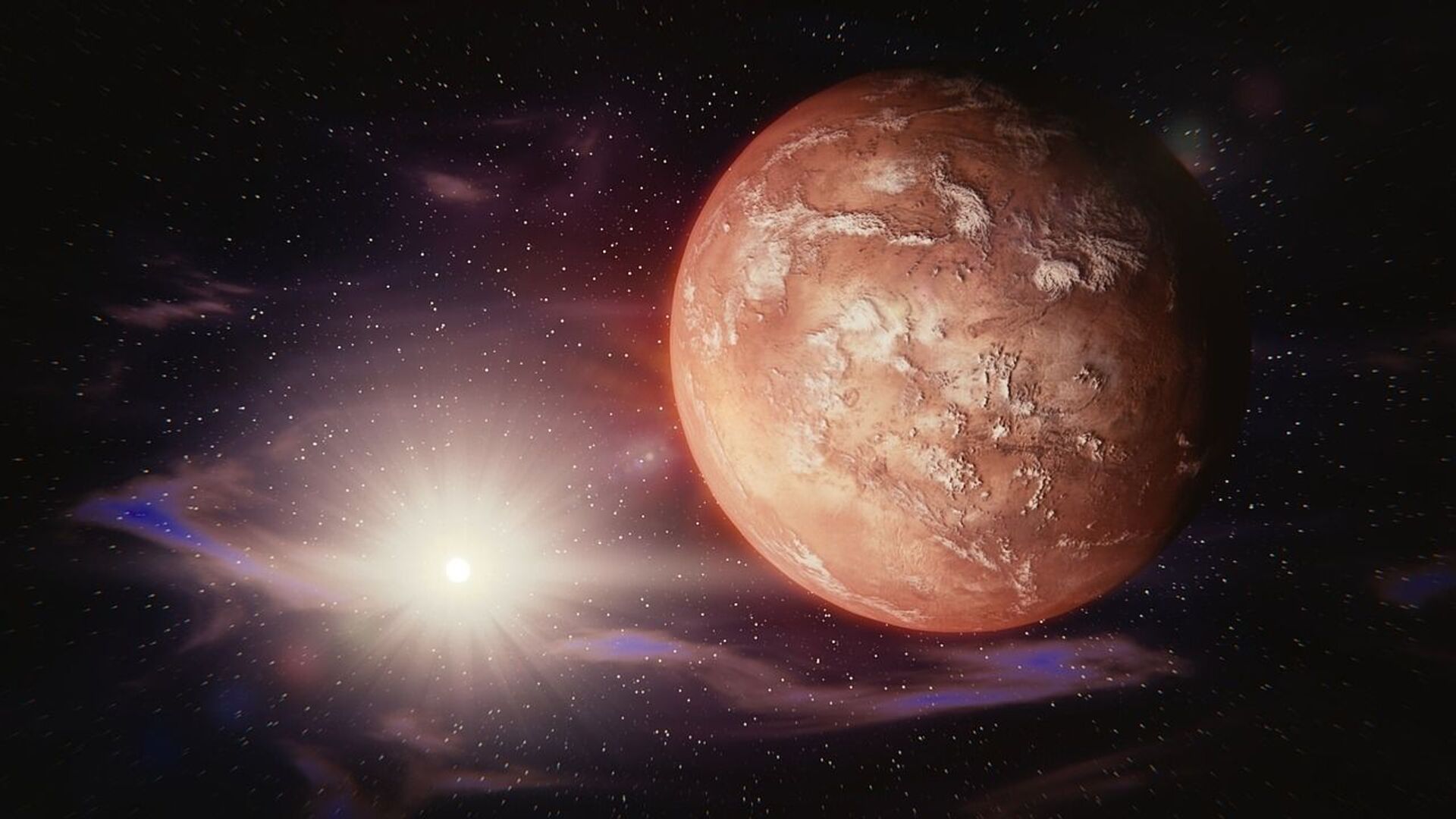https://sputnikglobe.com/20211008/the-hunt-continues-new-places-where-signs-of-life-may-be-hiding-on-mars-pinpointed-by-scientists-1089767382.html
The Hunt Continues: New Places Where Signs of Life May Be Hiding on Mars Pinpointed by Scientists
The Hunt Continues: New Places Where Signs of Life May Be Hiding on Mars Pinpointed by Scientists
Sputnik International
Having concluded that a butte located near an ancient river delta may potentially contain remnants of life, the researchers also identified several other spots... 08.10.2021, Sputnik International
2021-10-08T12:17+0000
2021-10-08T12:17+0000
2022-11-30T10:10+0000
science & tech
study
signature
life
mars
https://cdn1.img.sputnikglobe.com/img/107809/36/1078093625_0:0:1280:720_1920x0_80_0_0_d3eb77d65978ee5e45033eec6c428f0c.jpg
Having examined photos of Mars obtained by NASA’s Perseverance rover, a team of scientists has pinpointed a place where biosignatures may potentially be found.According to CNET, researchers suggest that certain areas in an ancient river delta that was once located near the rover’s landing zone in the Jezero Crater could still harbour “fossilised evidence of extraterrestrial life.”The team, whose study was recently published in the journal Science, also turned their attention toward the Kodiak, a butte that sits near the main delta. This butte, as the media outlet points out, serves as “geologic representation of the main river delta's features”, with researchers saying that Kodiak’s stratigraphy can be seen from afar.Judging by the boulders the team spotted in the photos they examined, Mangold said that Jezero’s river delta was likely of the type that are formed by a stronger water flow, with the team reportedly believing that the flow of the river “suddenly grew more intense during the course of its life”.The examination of the Kodiak also allowed researchers to gauge the water levels in that ancient body of water, with Mangold reportedly surmising that it would’ve been about 2,500 meters high, and that said elevation varied over time.While the team suggests that deeper layers of Kodiak may potentially contain remnants of life, Mangold remarked that the geological feature in question is not quite easily accessible by the rover, due to the butte being “a bit vertical facing”.
https://sputnikglobe.com/20210913/nasas-perseverance-rover-reveals-hints-of-potentially-habitable-sustained-environment-on-mars-1089041158.html
mars
Sputnik International
feedback@sputniknews.com
+74956456601
MIA „Rossiya Segodnya“
2021
News
en_EN
Sputnik International
feedback@sputniknews.com
+74956456601
MIA „Rossiya Segodnya“
Sputnik International
feedback@sputniknews.com
+74956456601
MIA „Rossiya Segodnya“
science & tech, study, signature, life, mars
science & tech, study, signature, life, mars
The Hunt Continues: New Places Where Signs of Life May Be Hiding on Mars Pinpointed by Scientists
12:17 GMT 08.10.2021 (Updated: 10:10 GMT 30.11.2022) Having concluded that a butte located near an ancient river delta may potentially contain remnants of life, the researchers also identified several other spots containing similar layers, which may be easier to access for the Perseverance rover.
Having examined photos of Mars obtained by NASA’s Perseverance rover, a team of scientists has pinpointed a place where biosignatures may potentially be found.
According to CNET, researchers suggest that certain areas in an ancient river delta that was once located near the rover’s landing zone in the Jezero Crater could still harbour “fossilised evidence of extraterrestrial life.”
The team, whose study was recently published in the journal
Science, also turned their attention toward the Kodiak, a butte that sits near the main delta. This butte, as the media outlet points out, serves as “geologic representation of the main river delta's features”, with researchers saying that Kodiak’s stratigraphy can be seen from afar.
"By understanding the stratigraphy at Kodiak, it enables us to identify the deposits which are the most likely to be of interest for the preservation of life," said Nicolas Mangold, a geologist at the University of Nantes in France and lead author of the study.
Judging by the boulders the team spotted in the photos they examined, Mangold said that Jezero’s river delta was likely of the type that are formed by a stronger water flow, with the team reportedly believing that the flow of the river “suddenly grew more intense during the course of its life”.

13 September 2021, 17:49 GMT
"A big question for us," Mangold said, "is to understand why there was this change of hydrological activity, because that is probably the signature of a change of climate".
The examination of the Kodiak also allowed researchers to gauge the water levels in that ancient body of water, with Mangold reportedly surmising that it would’ve been about 2,500 meters high, and that said elevation varied over time.
"That kind of observation is really key," he explained. "Because it shows that there was a lake in Jezero, no doubt about that ... in addition, the change from horizontal bedding to the faults, which are deep in layers, indicates the past water level."
While the team suggests that deeper layers of Kodiak may potentially contain remnants of life, Mangold remarked that the geological feature in question is not quite easily accessible by the rover, due to the butte being “a bit vertical facing”.
"But we have identified some locations on the main delta fault where we can access similar types of layers,” he said. “Those locations are some of our preferred targets for future rover travels."


